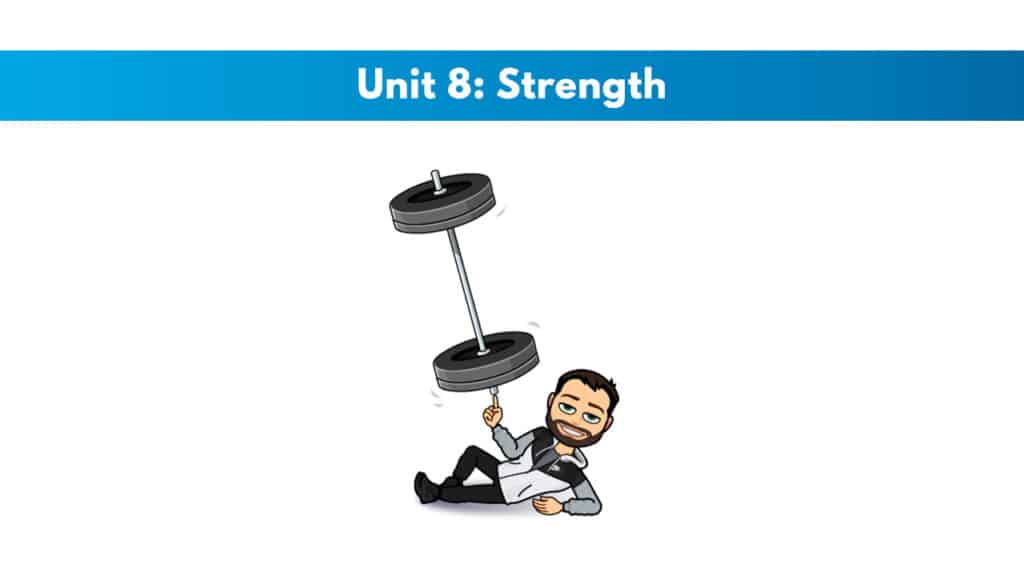
If you have not yet signed up for the ISSA CPT certification, receive a big discount here.
Get your copy of the ISSA CPT exam cheat sheet.
It helps immensely in your ability to study for the ISSA test. This PDF printable one-page sheet gives you a breakdown of the skills and knowledge candidates need to pass the exam.
My PTP students report cutting their ISSA study time and effort in half with Trainer Academy.
Benefit from the Exam Pass Guarantee and Retake Fee Guarantee. Plus, take advantage of my current discount code PTPJUNE for 45% off the MVP Program (Ends July 3rd, 2025).
Try it out for free here to see if it’s right for you, or read my detailed review for further insights.
1: What is “strength’ and name its four main sources
Strength is the ability to control resistance through contracting muscles with maximum force and is influenced by the following:
- Structural/anatomical factors
- Physiological/biochemical factors
- Psychoneural/psychosocial factors
- External/environmental factors
2: Define limit strength and what sort of athlete needs to optimize this
The maximum amount of musculoskeletal force possible in one effort
Powerlifters require optimal limit strength
3: Name the 3 types of limit strength
Eccentric strength, Static strength, and Concentric strength
4: Give an instance of each in a provided exercise
- Eccentric: lowering phase of any lift (dumbbell curl extension)
- Static strength: holding a plank
- Concentric strength: lifting phase of resistance training (dumbbell bicep curl flexion)
5: Describe the main distinction between absolute and limit strength
Absolute strength is the strength gained through training alone; Limit strength is the maximal strength achieved through external enhancement
6: Describe speed strength and its two types
Speed strength is strength efficiently applied over the shortest possible period of time. It is often equated with power and constitutes starting strength and explosive strength.
7: What are the differences between the two types, and how are they each used in an exercise?
Starting strength is the ability to recruit motor units instantaneously at the start of the movement
Explosive strength is the ability to exert strength or force as rapidly as possible in a given movement
8: Determine anaerobic strength. What pathway is employed when using this kind of strength?
Force and energy that is produced without the efficient use of oxygen. Through the ATP/Cp pathway and the glycolytic pathway.
9: Describe linear strength endurance
Linear strength endurance is the ability to perform repeated, sustained movements
10: What is nonlinear strength endurance?
Non-linear strength endurance is the ability to perform a diverse array of movements at a sustained level of strength/power
11: Describe some measures of cardiovascular efficiency as related to aerobic strength
Low heart rate and high stroke volume.
12: Name the 7 factors of the strength curve
Angle Q
Angle A
Force
Time
Relationship between time and force
Relationship between limit strength and fmax
Amortization phase
13: Explain the general adaptation syndrome (GAS) principle and how it correlates to periodized training
A condition in whereby general reactions of bodies to stress can be classified into 3 phases: Alarm, Resistance, and
Exhaustion. When deciding on periodized exercise, it can be utilized to determine the body’s short and long term affinity to stressors.
Exclusive PTP CPT Offers |
||
|---|---|---|
Most Popular Cert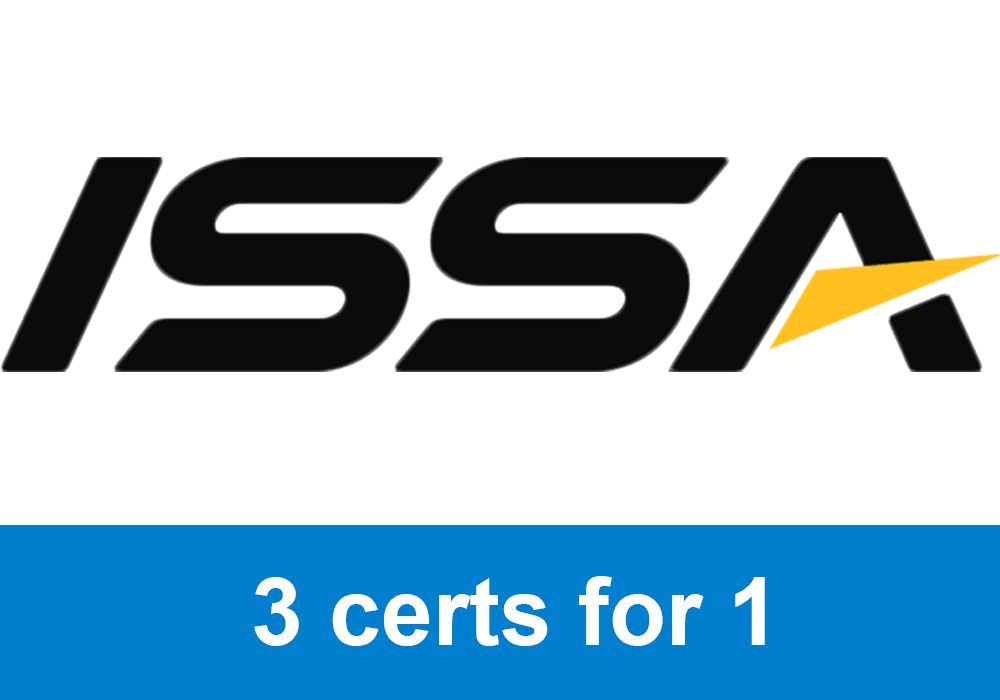 | Best Online NCCA Cert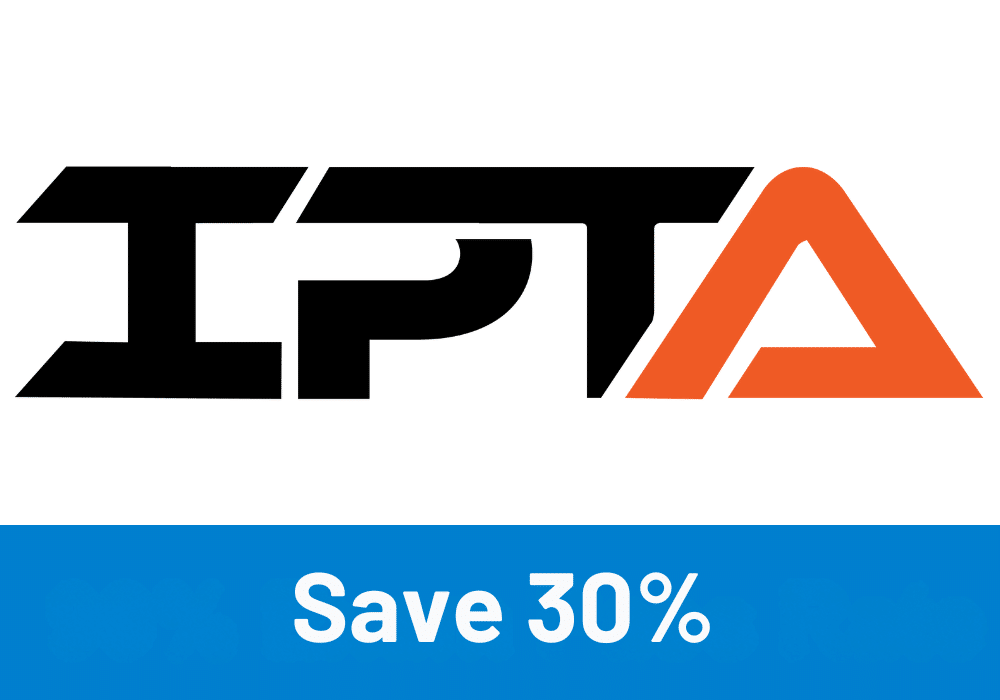 | Best Study Materials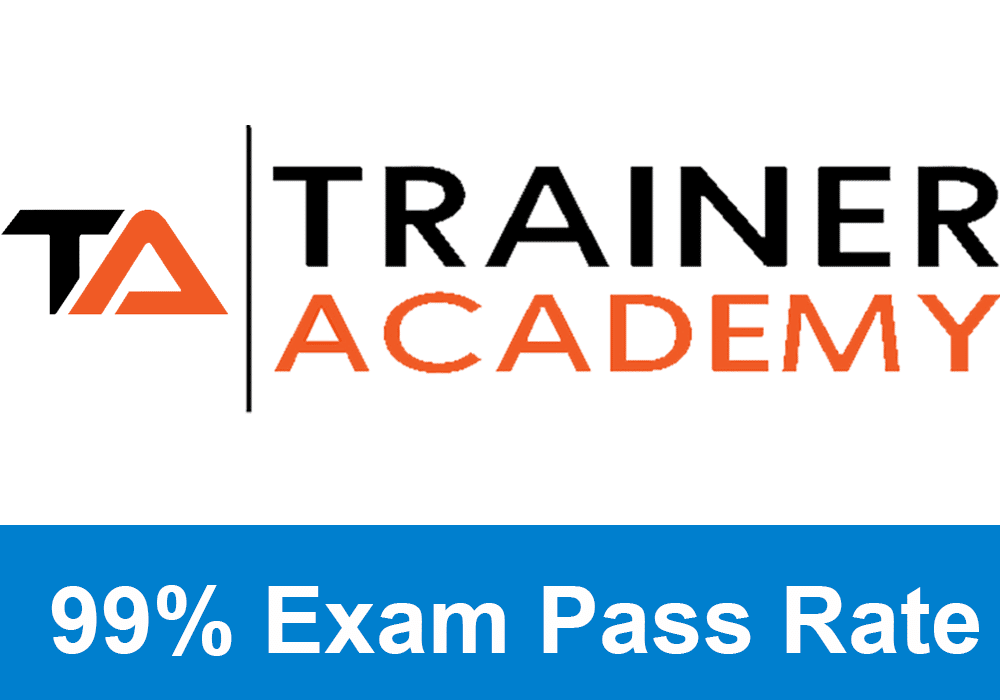 |
Gold Standard Cert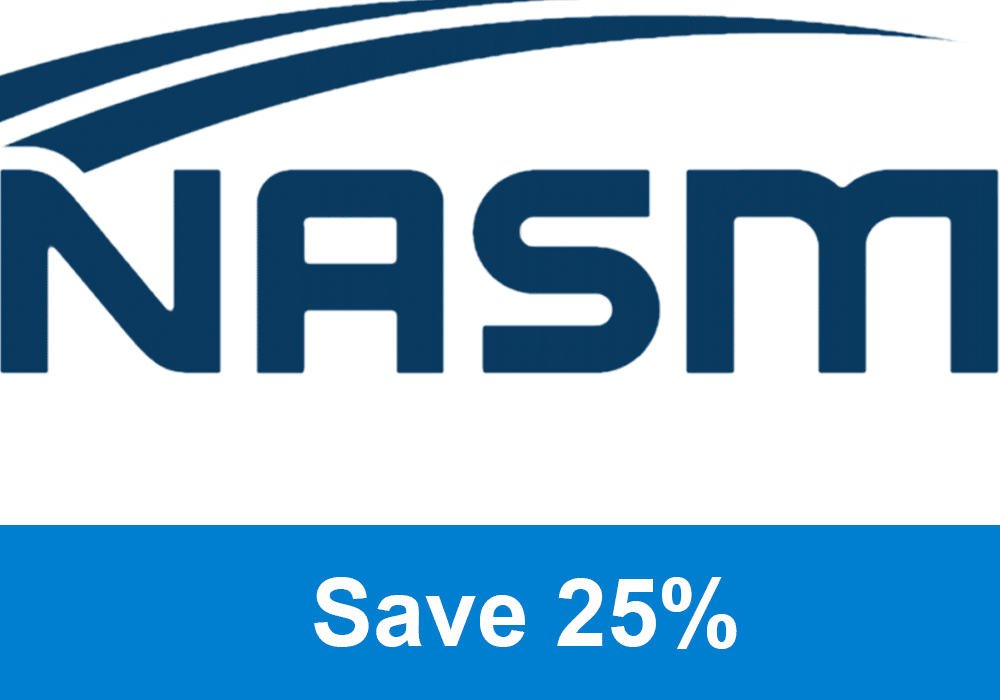 | A Good Option | Best CPT for you?  |
14: What are several ways training can cause fatigue?
Training stressors and training stimuli
15: Describe constant resistance with an example of an exercise utilizing this type of equipment
An exercise where weight neither increases nor decreases during execution. Lifting a barbell is an example of this.
16: Describe variable resistance and what principle is essentially correlated to it
Variable resistance is when the resistance load can fluctuate during an exercise movement. an example would be the Nautilus machine
17: Describe accommodating resistance and how it deviates from variable resistance
A machine that allows one to exert maximum effort through a full range of motion. Variable resistance devices operate on the theory that the number of resistance changes to match the leverage changes in your body; accommodating resistance maintains the resistance by controlling the speed of your exercise movement.
18: Describe static resistance and how it may be included in an exercise
Static or isometric resistance relies on holding tension through a fixed position over an extended time for maximal strength adaptation.
19: How do bands and chains function, and what are the advantages of each regarding exercise?
Bands and chains cause a graduating increase in resistance with an increase in range of motion, causing a gradual increase in muscle fiber recruitment.
20: What are the advantages of calisthenics? Give 3 examples
Calisthenics improves muscular and cardiovascular endurance, overall strength, functional mobility, and flexibility.
21: What is the main benefit of dumbbell training in connection to synergistic and stabilizer muscle groups?
Dumbbell training, as opposed to barbell training, requires extra control and balance due to uneven weight distribution and exposure to more planes of movement. this causes higher recruitment of stabilizer and synergist muscles
22: Name some benefits of training with kettlebells?
Increased core stability, endurance strength, and power.
23: Describe the correct swing phase of a kettlebell swing?
It consists of a typical squat movement pattern along with rapid arm movements that capitalize on the momentum generated from the initial phase
24: Describe some benefits of dumbbell training?
They allow for synergist engagement at far higher prominence than any other form of resistance or weight. They are easier to set up, handle and use than other resistance apparatus, such as barbells or machines. they are more cost-efficient than other
25: Describe 3 dumbbell exercises that employ at least 3 muscle groups
Bicep curl, tricep kickback, shoulder press
26: In what way do adjustability and balance represent a positive and negative role in exercise machines?
In terms of adjustability, machines offer a very quick and simple adjustment method. However, the adjustable position and load range are often very precise and can limit the potential for maximal effort training and infinitely variable body types. Balance through machines is safely maintained via the mechanical structure; this, unfortunately, limits one’s opportunity to engage and develop intrinsic balance and stability through synergist recruitment.
27: Which exercises benefit from an unstable surface?
Exercises that recruit core muscle groups and aim to increase strength in synergist groups to promote optimized balance and proprioception.
28: What type of exercises do not benefit from an unstable surface?
Exercises designed for maximal strength and hypertrophy don’t benefit
29: What sort of training makes good use of medicine balls?
Plyometric weight training and rehabilitation
30: Describe the 3 main grips and when to use each
Supinated grip: Grip in which the palm faces the ceiling.
Pronated grip: Grip in which the hand(s) or forearm(s) are rotated so that the palm faces down or back.
Neutral grip: Grip wherein the palms face each other.
31: Describe the correct breathing pattern for new trainees vs advanced trainees
New trainees are advised to exhale on exertion, while seasoned trainees can hold their breath on exertion.
32: In what way does exhalation play a part in lifting?
It promotes the generation of greater force, accuracy, and control.
33: Explain the advantages of warming up before exercise and what is the appropriate length?
Warm-up raises the body to be able to perform at an adequate level. It helps ignite vital functions such as breathing, cardiovascular activity, nervous activity, force generation, and endurance and prepares joints and connective tissue for intense activity and injury prevention.
34: What particular type of exercise doesn’t benefit a warm-up?
Endurance based activity
Exclusive PTP CPT Offers |
||
|---|---|---|
Most Popular Cert | Best Online NCCA Cert | Best Study Materials |
Gold Standard Cert | A Good Option | Best CPT for you?  |
35: Explain the necessity of a suitable cooldown and what is the proper length?
A cooldown can help decrease lactic acid accumulation, the subsequent pain associated with that, and the pain from resultant muscle micro-trauma. A cool-down should last between 5-10 minutes.
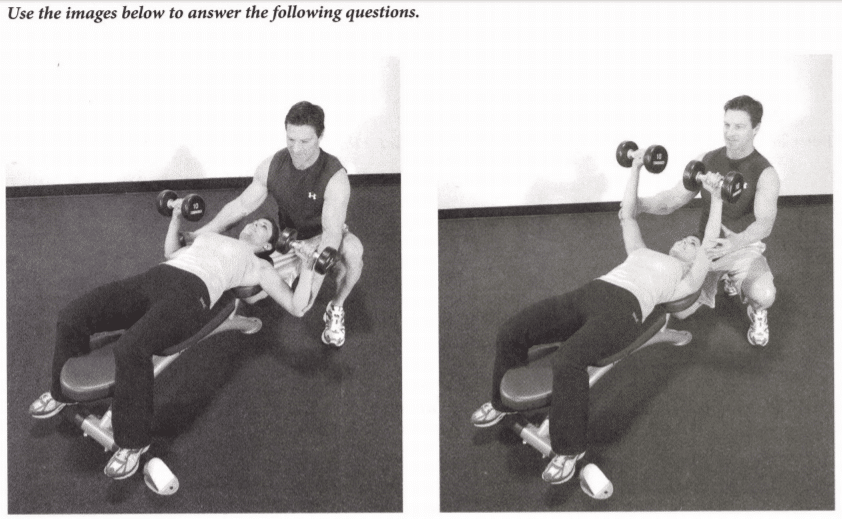
36: Which exercise is displayed in the images?
Incline db flyers
37: What is the main muscle concerned in this exercise?
Pectoralis group
38: What is the point of insertion of the primary muscle involved in this exercise?
39: What is the point of origin of the primary muscle involved in this exercise?
40: What is the intended action of the primary muscle involved in this exercise?

41: Name an alternative exercise for the primary muscle involved in this exercise
Barbell chest press
42: What is the proper grip for the exercise shown above?
Pronated
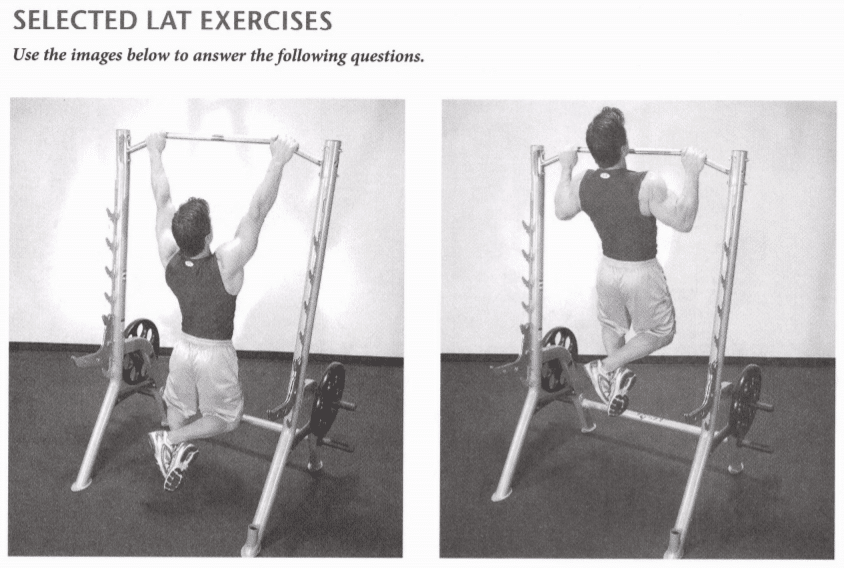
43: Which exercise is displayed in the images?
Pull-up
44: What is the main muscle concerned in this exercise?
Latissmus dorsi
46: What is the point of insertion of the primary muscle involved in this exercise?
47: What is the point of origin of the primary muscle involved in this exercise?
48: What is the intended action of the primary muscle involved in this exercise?
49: Name an alternative exercise for the primary muscle involved in this exercise
Lat pull-down
50: What is the proper grip for the exercise shown above?
Pronated
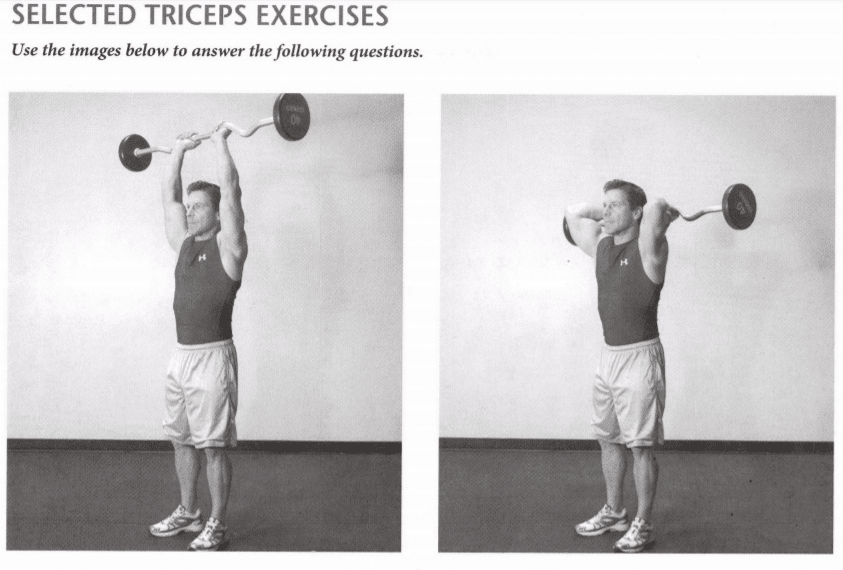
51: Which exercise is displayed in the images?
French Press
52: What is the main muscle concerned in this exercise?
Triceps Brachii
53: What is the point of insertion of the primary muscle involved in this exercise?
54: What is the point of origin of the primary muscle involved in this exercise?
55: What is the intended action of the primary muscle involved in this exercise?
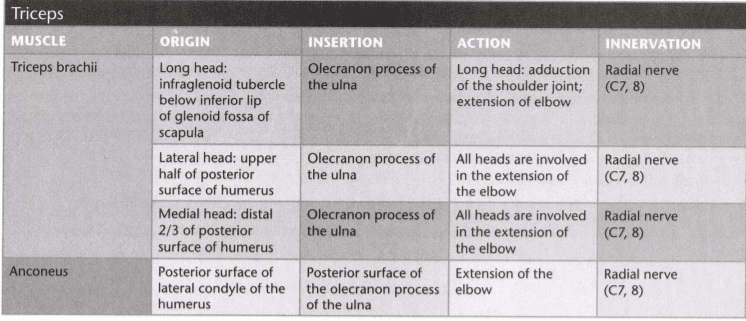
56: Name an alternative exercise for the primary muscle involved in this exercise
Triceps Cable Extension with Bar
57: What is the proper grip for the exercise shown above?
Pronated
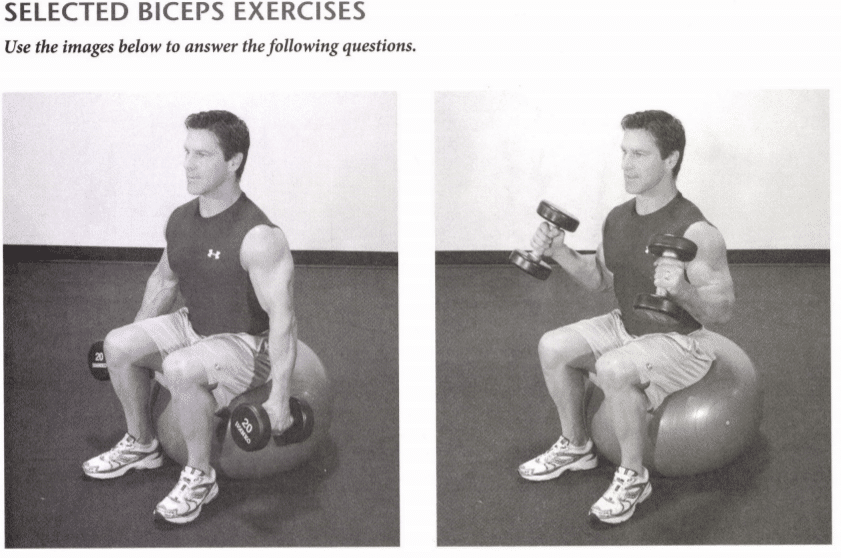
58: Which exercise is displayed in the images?
Dumbbell hammer curl on the ball
59: What is the main muscle concerned in this exercise?
Biceps brachii
60: What is the point of insertion of the primary muscle involved in this exercise?
61: What is the point of origin of the primary muscle involved in this exercise?
62: What is the intended action of the primary muscle involved in this exercise?

63: Name an alternative exercise for the primary muscle involved in this exercise
, standing hammer curl
64: What is the proper grip for the exercise shown above?
Neutral
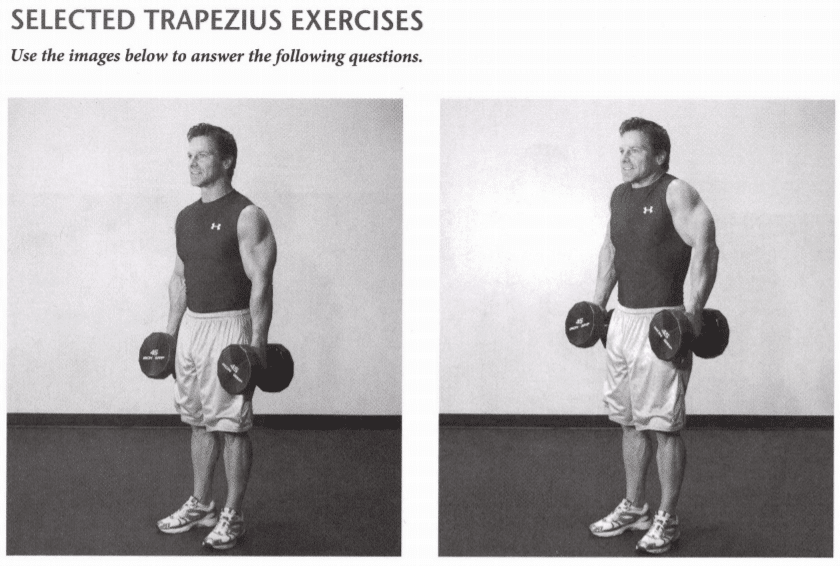
65: Which exercise is displayed in the images?
Dumbbell shrug
66: What is the main muscle concerned in this exercise?
Trapezius
67: Where is the point of insertion of the main muscle concerned in this exercise?
Upper: the posterior aspect of the lateral clavicle
68: Where is the point of origin of the main muscle concerned in this exercise?
Upper: skull base, occipital protuberance, and posterior ligaments of the neck.
69: What is the intended action of the main muscle concerned in this exercise?
Upper: scapula elevation and extension of the head at the neck
70: Describe a different exercise for the main muscle concerned in this exercise
Cable bar shrug
71: What is the proper grip for the exercise shown above?
Pronated
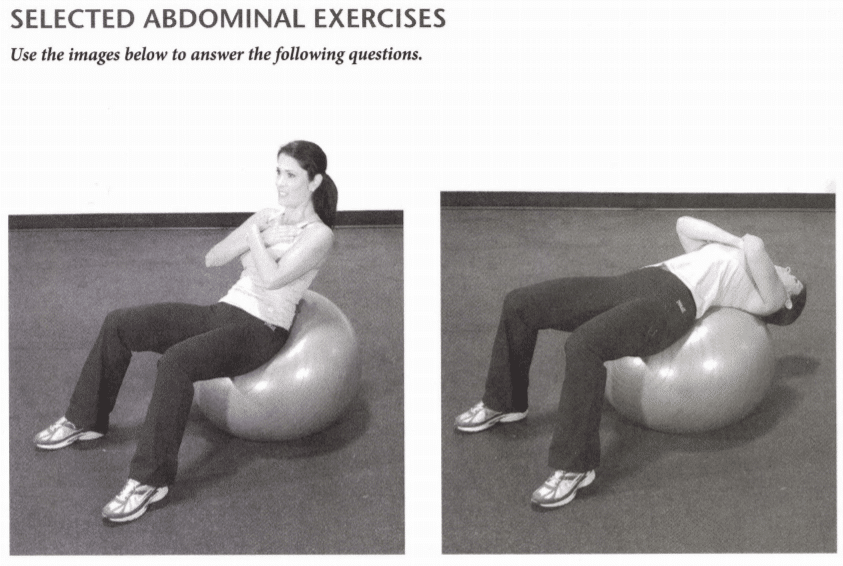
72: Which exercise is displayed in the images?
Stability ball crunch
73: What is the main muscle concerned in this exercise?
Abdominal group
74: What is the point of insertion of the primary muscle involved in this exercise?
75: What is the point of origin of the primary muscle involved in this exercise?
76: What is the intended action of the primary muscle involved in this exercise?

77: Name an alternative exercise for the primary muscle involved in this exercise
crunch
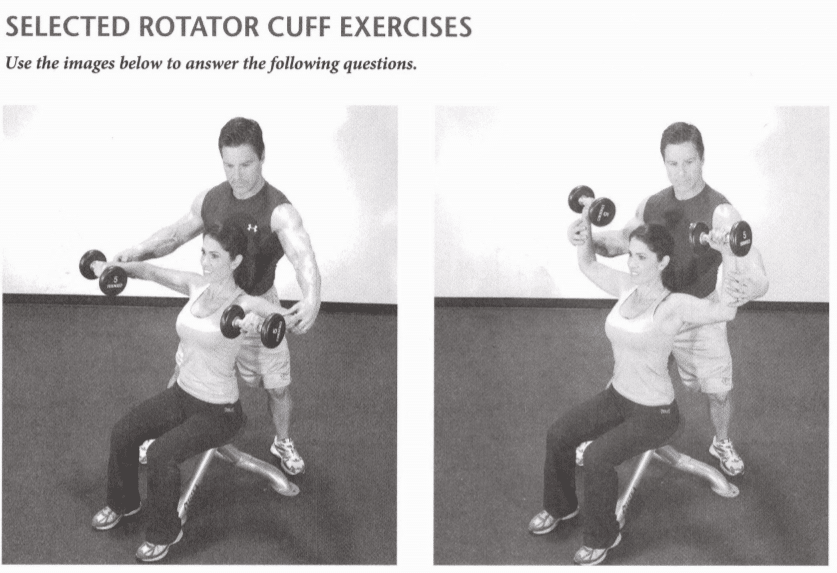
78: Which exercise is displayed in the images?
Seated dumbbell horizontal external rotation
79: What is the main muscle concerned in this exercise?
Rotator cuff group
80: What is the point of insertion of the primary muscle involved in this exercise?
81: What is the point of origin of the primary muscle involved in this exercise?
82: What is the intended action of the primary muscle involved in this exercise?

83: Which exercise is displayed in the images?
External rotation at 90-degree abduction
84: What is the proper grip for the exercise shown above?
Pronated
85: Name an alternative exercise for the primary muscle involved in this exercise
Dumbbell horizontal external rotation
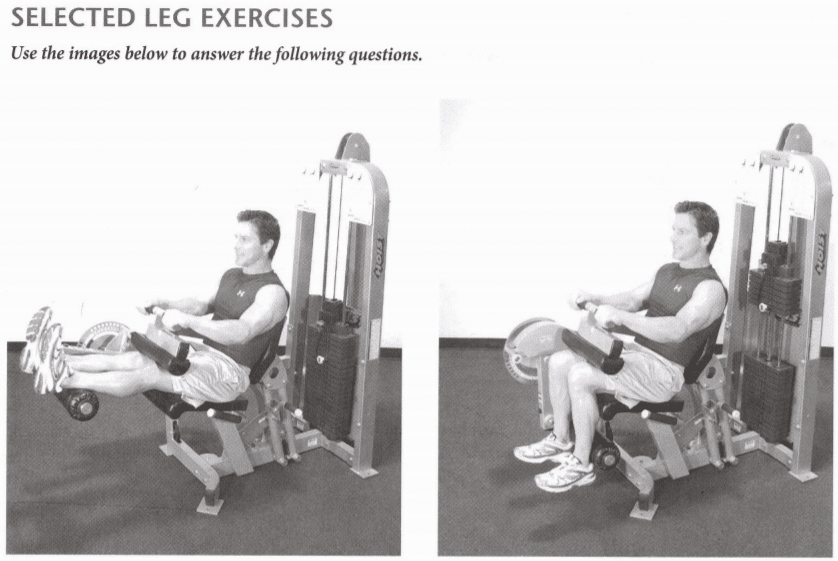
86: Which exercise is displayed in the images?
Seated leg curl
87: What is the main muscle concerned in this exercise?
hamstring group
88: What is the point of insertion of the primary muscle involved in this exercise?
89: What is the point of origin of the primary muscle involved in this exercise?
90: What is the intended action of the primary muscle involved in this exercise?

91: Name an alternative exercise for the primary muscle group involved in this exercise.
Prone hamstring curl
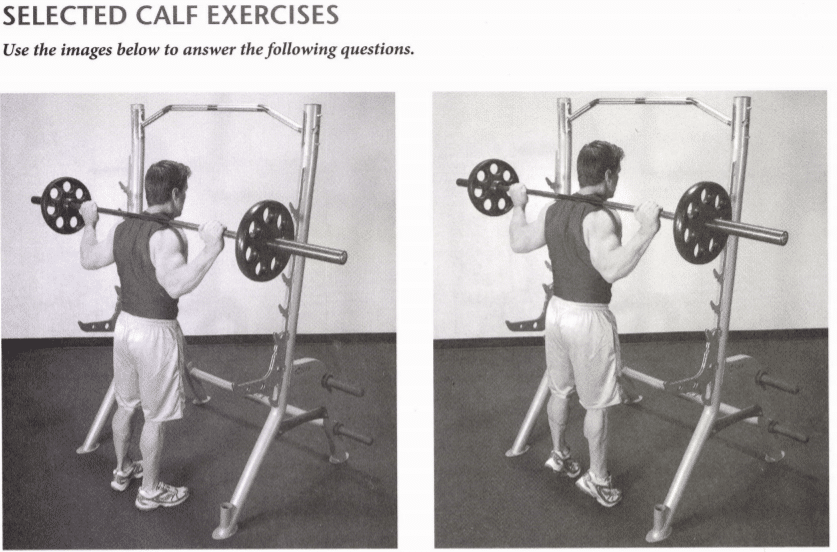
92: Which exercise is displayed in the images?
Standing barbell calf raise
93: What is the main muscle concerned in this exercise?
Gastrocnemius
94: What is the point of insertion of the primary muscle involved in this exercise?
95: What is the point of origin of the primary muscle involved in this exercise?
96: What is the intended action of the primary muscle involved in this exercise?

97: Name an alternative exercise for the primary muscle involved in this exercise
Seated calf raise
98: What is the proper grip for the exercise shown above?
Pronated.
If you want assistance wrapping your head around this material, make sure to check out Trainer Academy for some awesome ISSA study materials. They have Practice tests, flashcards, audio study guides, and much more.

 Have a question?
Have a question? 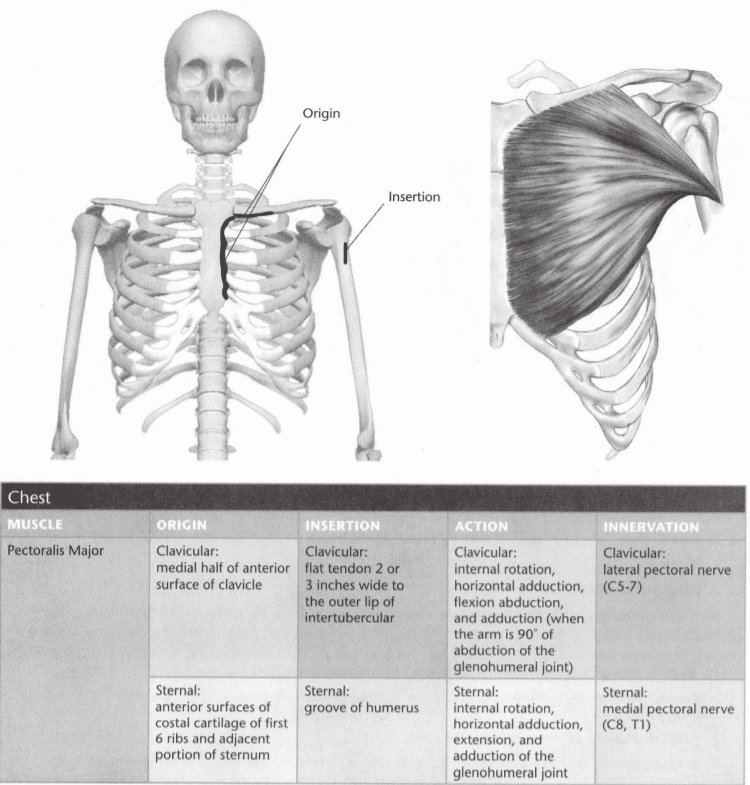


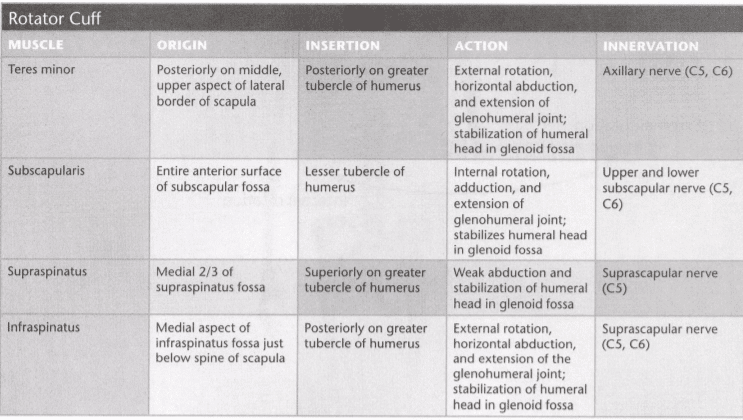
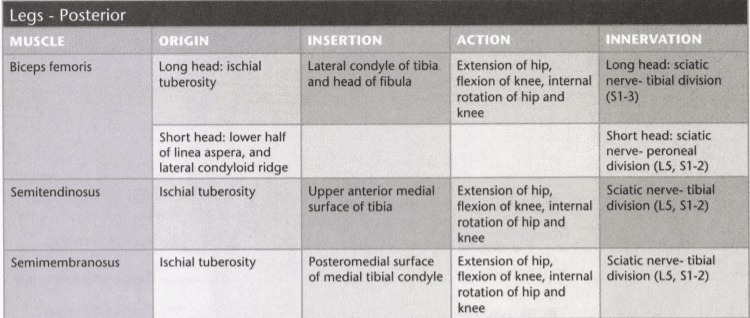





In the ISSA course. Is there an on-line version too that would help you learn how to pronounce some of medical terms?
Hey Jack, if you have signed up for the international sports sciences Association exam, you have access to an online portal that can help you with various terms. I hope this helps.